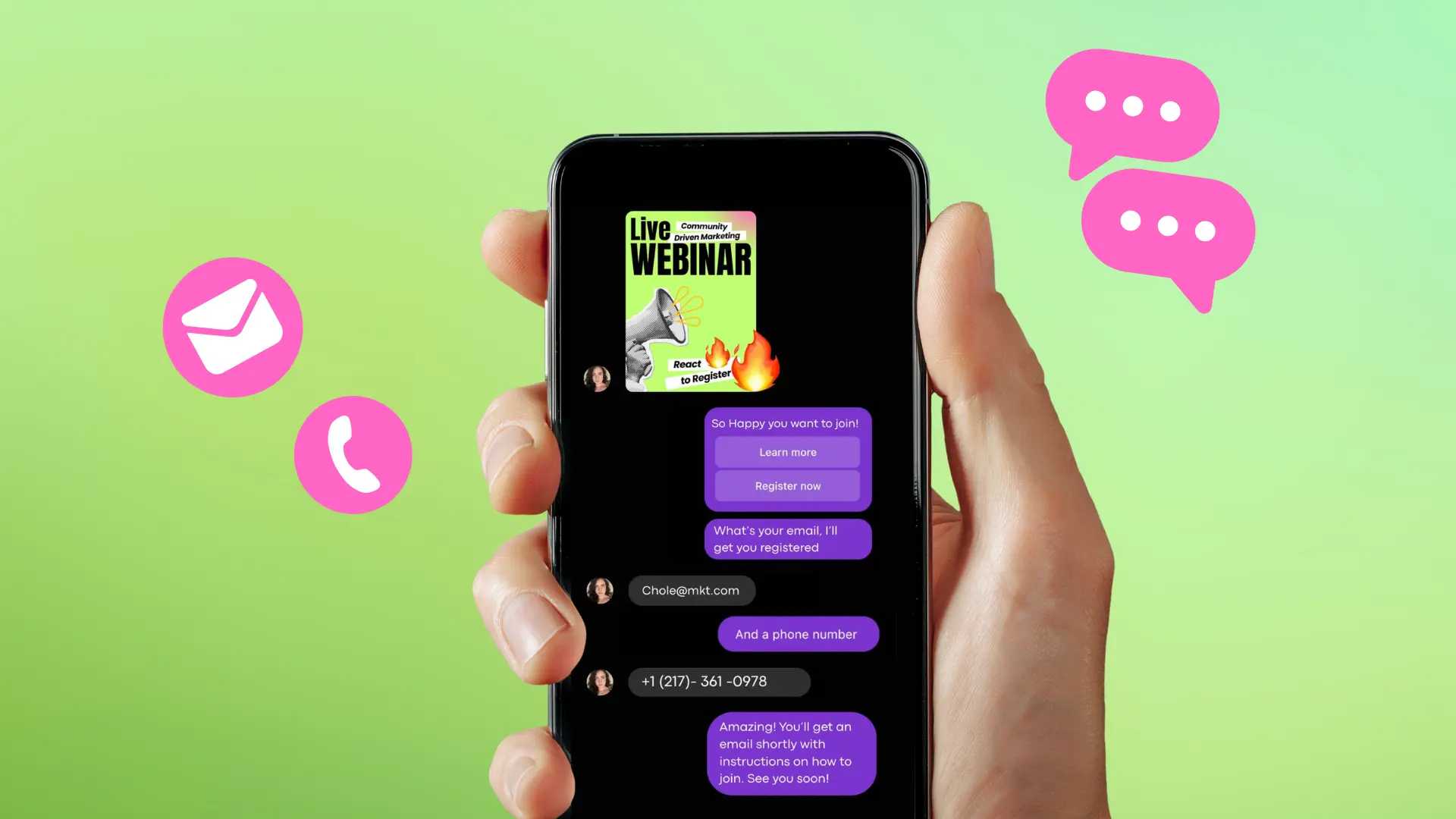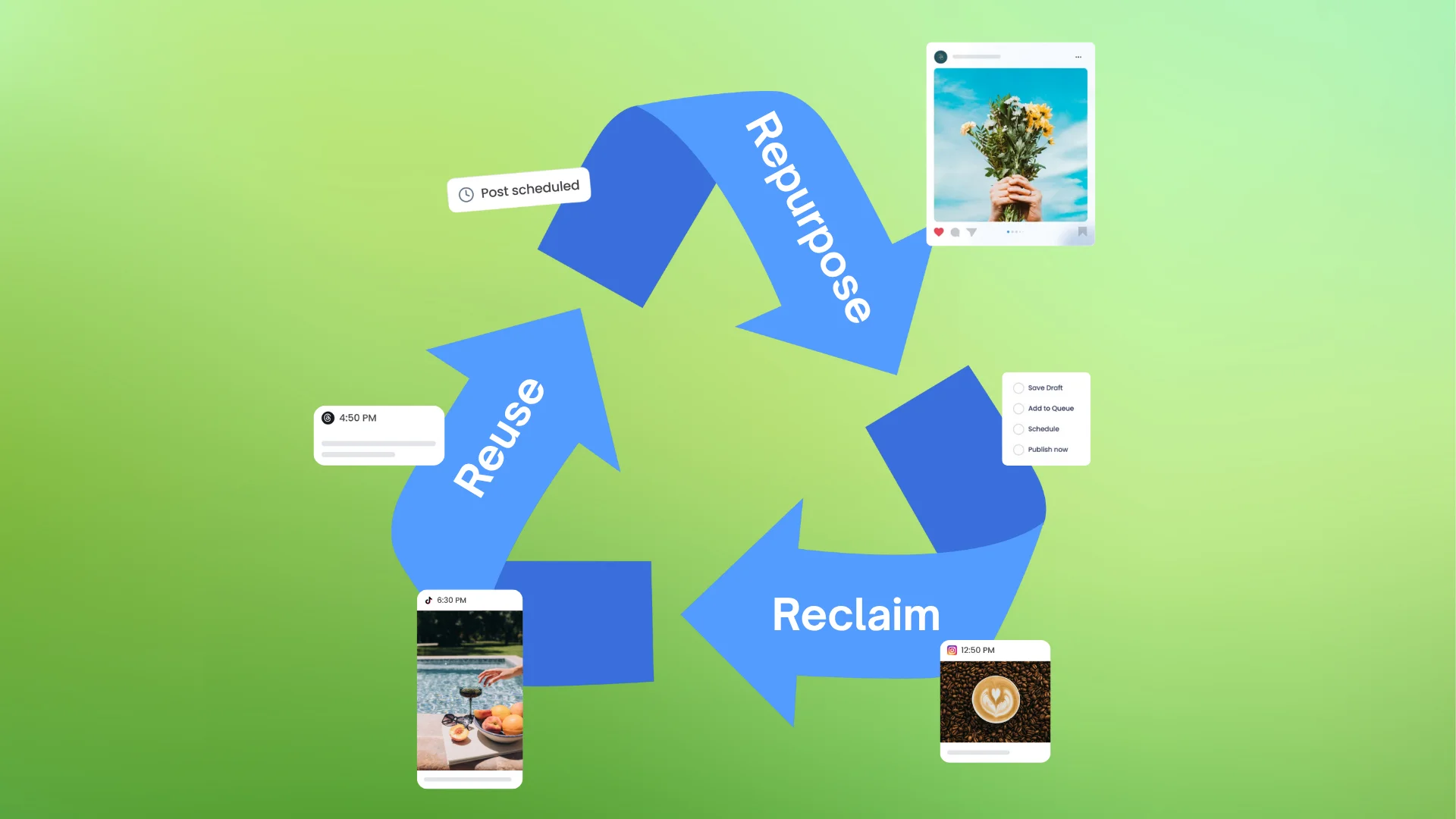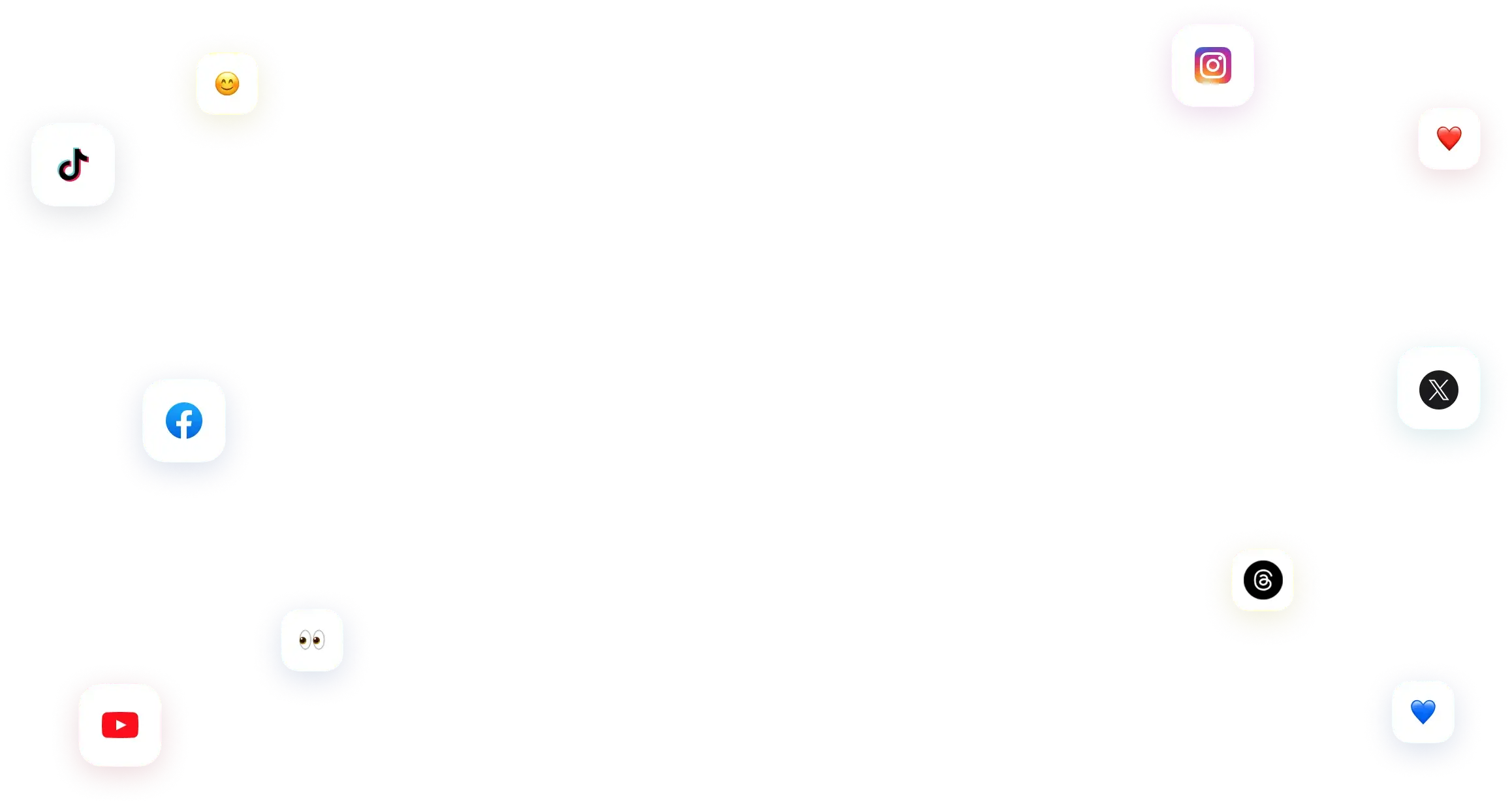New

Turn Your DMs Into Lead Gen!
Learn how to collect lead data from your DMs such as email addresses, phone numbers, and more right from your social inbox. If you are not yet automating your DMs your competitors are outpacing you.

How Something Social Saved 75% of Their Time and Increased Revenue by 15%
See how a fast-growing agency improved operations, cut down hours of manual work, and unlocked new revenue opportunities with Vista Social.
New

50 Unique Social Media Ideas for Consistent Content Creation
Discover 50 unique social media post ideas to engage your audience, grow your brand, and maintain a consistent content strategy with ease!

Mastering Content Reuse: The Key to a Consistent and Sustainable Posting Strategy
Published on July 22, 2025
9 min to read
The Ultimate Social Media Team Roles Checklist for Brands
Summarize with AI


Table of Content

In 2025, expecting one person to handle all your brand’s social media needs is no longer realistic. With 63.9% of the global population on social platforms, yet only 27% of businesses have a dedicated social media team, there’s a clear gap between demand and internal support. Social media has evolved far beyond a casual posting platform to a full-scale marketing channel that requires strategy, creativity, and real-time engagement. That’s why social media team roles are no longer optional—it’s essential.
Without roles, teams risk misalignment and delayed results. On the other hand, having the right people in place and knowing exactly why—ensures a smoother, improved, and more consistent brand strategy and voice.
So, suppose you’re looking into building your team from scratch or restructuring for better efficiency. In that case, this guide is designed to help you identify the key roles and responsibilities your brand should consider for a high-performing social media team.
Table of contents
Why Defining Social Media Team Roles Matters
When everyone knows their lane, collaboration flows. Assigning social media team roles not only lays the foundation for smoother workflows but also teaches accountability. As burnout rates rooted in social media jobs rise, defined roles are needed more than ever. It also prevents misaligned roles by ensuring workloads are distributed appropriately—allowing for performance tracking and ownership.
Through clearly outlined responsibilities, you create a work environment where every role can pay more attention to their focus areas. Whether it’s community management, analytics, or content creation, having team members who can dedicate their time to their expertise helps your brand stay competitive.
The Essential Social Media Team Roles Explained
Now that we’ve established why you need social media team roles… which roles do you really need? Here’s a quick breakdown of the core social media team roles every brand should consider—from strategy to analytics—we got you covered.
Social Media Manager
When you think social media manager, think captain of the ship. They are the ultimate multitaskers, from lead planning to execution. Alongside you, they ensure that all the moving parts of your social media presence are aligned with the brand’s goals and executed smoothly across platforms.
Whether it’s mapping out publishing calendars, aligning campaigns with company milestones, or reporting results to leadership, this role keeps everyone on track and everything on brand.
Their day-to-day typically involves:
- Overseeing strategy and day-to-day execution
- Coordinating campaigns and publishing schedules
- Monitoring of platform performance
- Liaison between departments and leadership
[Must Read: How to Become the Top Social Media Manager in 2025]
Content Creator (Writer/Designer/Video)
Whenever you find yourself stopping in scrolls because of great content, it’s all thanks to the content creators. From witty captions to viral-worthy TikToks and cinematic brand stories, they serve as the creative powerhouse of your social presence. If you want an informative carousel or a short-form reel that sparks emotion, content creators transform these ideas into reality.
From working across formats and merging aesthetics to brand value, their role also includes:
- Creating written, visual, and video content
- Adapting content for each platform
- Maintaining brand voice and aesthetic
- Keeping content aligned with strategy and trends
[Must Read: Interactive Content Trends for 2025: Polls, Quizzes, and AR Experiences]
Community Manager
Did you know that 86% of businesses believe that community management is one of the essentials to success? That’s how important a community manager is. Every like, comment, and DM is a chance to build loyalty—or lose it. They are one of the core pillars of your brand’s social voice in real time, turning passive followers into an active community.
Beyond inbox and comment replies, they are also responsible for:
- Responding to comments, DMs, and brand mentions
- Building relationships with followers and customers
- Monitoring of brand sentiment
- Flagging of issues for escalation (PR, product, support)
[Must Read: Building a Community: Strategies for Fostering Brand Loyalty Online]
Social Media Analyst / Insights Specialist
To make informed decisions for your brand, you need data. Beyond raw data, social media analysts deep dive into these insights to uncover what’s resonating and what needs rethinking in your strategy direction. From as-needed reports to campaign breakdowns, their insights guide content adjustments and help ensure the team’s efforts translate into real growth.
To ensure your approach is at its most efficient, they also work on:
- Tracking key performance indicators (KPIs)
- Creating performance reports
- Analyzing trends to inform content strategy
- Testing different formats, times, and campaigns
[Must Read: Essential Social Media Metrics to Track for Success in 2024]
Paid Social Specialist
When it’s time to maximize content or pull out strategies like precision targeting, paid social specialists step in. This role focuses on building and optimizing social ad campaigns to drive results, from boosting posts to executing launches. They are responsible for constantly monitoring and adjusting audiences, creatives, and budgets to ensure you get the best value for every dollar spent.
Their expertise also includes:
- Managing advertising campaigns across platforms
- Setting up and optimizing audiences, creatives, and bids
- Monitoring of ad spend and ROI
- Running A/B tests and reporting of performance
[Must Read: The Ultimate Guide to Boosting Social Posts]
Influencer Marketing Lead / Partnerships Manager
In today’s social media world, 61% of consumers trust influencers more than brands—but how do you know you’re tapping into the right ones? Through influencer marketing leads, partnerships feel more seamless and intentional—delivering meaningful results. From outreach to contract negotiation to campaign follow-ups, they help build and nurture relationships with creators who align with your brand’s values and audience.
Their work often includes:
- Builds relationships with influencers and creators
- Negotiates contracts and deliverables
- Tracks creator performance and engagement
- Ensures content aligns with brand and legal standards
[Must Read: Guide to Influencer Marketing: 7 Key Steps for Success]
Try Vista Social for Free
A social media management platform that actually helps you grow with easy-to-use content planning, scheduling, engagement and analytics tools.
Get Started NowSocial Media Strategist (for larger teams)
Before others can execute, the strategist is always one step ahead. On bigger teams, the social media strategist usually provides direction—what to say, when, where, why, and how. They align the brand’s voice, values, and business goals with social trends and audience behavior to develop a progressive content approach.
As they are more aligned with work related to bigger launches and campaigns, this role is ideal for teams aiming for long-term growth and innovation.
Their scope usually involves:
- Owning of high-level vision and cross-platform planning
- Identifying audience insights and trend opportunities
- Guiding campaign direction and platform priorities
[Must Read: How to Build Effective Social Media Growth Strategies That Last]
@vistasocialapp Indeed is always open in another tab 🤭 #VistaSocial #fyp #marketing #socialmedia #media #relatable #genz #millennial #boomer #theoffice #corporate #coworkers #comedy #funny #workhumor #teamwork ♬ original sound – Vista Social
Optional or Specialized Social Media Team Roles You May Need
As your social media strategy matures or your audience grows, you may find yourself needing additional talent beyond the core social media team roles. These specialized roles bring targeted expertise that can improve many aspects of your brand. While these roles are not required for every business, they can surely make an impact depending on your goals and industry.
- Social Customer Support Rep: They are focused on resolving complaints, answering product-related questions, and managing customer service issues directly through your brand’s social media channels.
- Video Editor: They handle the editing of both short-form and long-form videos to fit platform-specific formats, while ensuring visual consistency and brand alignment.
- SEO + Social Copywriter: They optimize captions and copy for algorithm performance and conversion, bridging the gap between creativity and strategy.
- Platform Specialists: They bring deep, expert-level focus on specific platforms like TikTok, LinkedIn, or YouTube, helping your brand adapt strategies that maximize engagement and growth.
- Legal or Compliance Advisor: They ensure that all brand movements, such as posted content, align with industry regulations, platform policies, and legal standards, minimizing the risk of takedowns or penalties.
How to Structure Your Social Media Team Based on Company Size
The structure of your social media team should scale with your brand’s size, goals, and available resources. It would be unwise and wasteful to have a social media team structure for big companies when you’re only a startup. Here’s a quick guide on how to build a team that fits right into where your brand is now:
Small Business / Startup (1–2 People)
As a startup, social media managers will often wear multiple hats—from strategy to content creation, publishing, and even community engagement. It’s not ideal, but with smart tools and clear priorities, it’s manageable.
Instead of trying to be everywhere, focus on one to two high-impact platforms where your audience is most active, whether it be Facebook or TikTok.
To avoid overwhelming your team, explore tools like Vista Social to help you streamline your everyday functions, including publishing, automated scheduling, and analytics. For some, outsourcing tasks such as creatives to freelancers is a way to maintain quality without breaking the bank.
Mid-Sized Brand (3–5 People)
As your brand grows, your responsibilities do too. A mid-sized team typically brings in specialized roles like a dedicated content creator and community manager, allowing each person to focus more deeply on their area of expertise. This is also the stage where data and paid strategy start becoming crucial to nurture further growth. Adding oversight for analytics and advertising ensures you’re not just posting but also optimizing for performance and ROI.
With more hands on deck, your brand can begin developing platform-specific strategies, tailoring content and tone to suit TikTok, Instagram, LinkedIn, and beyond.
Enterprise Team (6+ People)
At the enterprise level, social media becomes an integrated, full-stack operation. You’re best off to have a complete team that includes strategists, content creators, paid ad specialists, community managers, and analysts—each owning a specific function within a broader system.
At this scale—you’re likely collaborating with external agencies or contractors—making communication more important than ever. Fortunately, departmental collaboration is your best buddy. By introducing departments such as sales, product team, public relations, and more, you cultivate an aligned work environment that ensures the achievement of your goals.
Vista Social To Help Your Social Media Team Work Efficiently
Whether you’re a startup managing everything yourself or an enterprise brand juggling multiple departments and agencies, keeping your workflows functional and efficient can be overwhelming. That’s where Vista Social comes in—a powerful all-in-one social media management solution. Here’s how Vista Social’s features are built to support your team at every stage:
- Collaborative content calendar: Through its collaborative calendar, you can plan, preview, and align your posts across platforms while keeping everyone on loop.
- Role-based approvals and permissions: With its built-in flexibility, you can easily assign roles and approve workflows to ensure content is reviewed and published with the right checks in place.
- Unified inbox for community management: From its centralized inbox, you can respond to comments, messages, and brand mentions without jumping between platforms, making it hassle-free.
- Scheduling across all platforms: Plan, publish, and boost content automatically across platforms like Facebook, Instagram, and more, saving time and reducing manual posting errors.
- Performance analytics dashboard: Through its customizable and automated reports, you can track KPIs, identify trends, and quickly tell what’s working and what isn’t—designed to guide your strategy, not overwhelm you.
How Clear Roles and Smart Tools Drive Social Success
Building an effective social media team doesn’t mean hiring more people—it starts with clearly defining roles and understanding what your brand truly needs. So before recruiting more people or launching your next campaign, it’s crucial to step back and define who does what.
By assessing your current setup, you can spot critical gaps that may or may not need support—like in partnerships, paid ads, or legal. Because filling these gaps isn’t just about hiring; it’s about ensuring talent with purpose and making sure each role supports your brand’s goals. From content creation to analytics and community engagement, aligning each role with your goals ensures you’re not just posting for the sake of it, but creating impact.
This is where tools like Vista Social make a real difference. Its comprehensive yet intuitive platform simplifies collaboration, enforces smart workflows, and helps teams of all sizes stay consistent and coordinated—without the splurge and heavy training. Whether you’re scaling or simply trying to streamline, having the right tech alongside your team can elevate your execution and management from scattered to strategic.
P.S. If you’re new here, Vista Social is a powerful social media management platform built to support growing teams—whether you’re a solo manager, part of a mid-sized crew, or leading a full-stack department. With features that simplify content planning, approval workflows, engagement, and reporting, Vista Social helps your team stay in sync and on top of their game.
Looking to build a smoother, smarter social media workflow? Start with Vista Social today.
FAQs About Social Media Team Roles
Can one person manage all social media platforms?
Absolutely, but it all boils down to your brand’s size and goals. A solo social media manager can oversee multiple platforms, especially in small businesses or startups. However, juggling strategy, content creation, community engagement, analytics, and more can lead to burnout or inconsistent execution. As your brand grows, it’s more efficient to expand your team or outsource certain tasks to maintain quality.
What skills should I look for in a social media manager?
Ideally, social media managers should have a blend of soft skills, industry fluency, and strategic thinking. Look for someone who’s creative enough for idea generation, analytical enough to interpret performance data, and organized enough to manage schedules and workflows—with a whole lot of adaptability and curiosity. Remember, they are supposed to make your work easier—not the other way around.
Should I outsource some social media roles or keep everything in-house?
It depends on your resources and needs. Outsourcing tasks like video editing or content design can be cost-effective and allow access to niche expertise. On the other hand, In-house roles offer better attention over brand needs. Remember that you’re not limited to one or the other as many teams thrive with a hybrid model—outsourcing specialized tasks while keeping core strategy and community engagement in-house.
What’s the difference between a content creator and a social media manager?
A content creator focuses on producing visuals, videos, and written content tailored to each platform. Their main goal is to craft engaging content that resonates with the audience. A social media manager, on the other hand, oversees the full strategy—planning content, managing schedules, analyzing performance, and interacting with the community. In some teams, one person wears both hats, but larger brands often separate the roles for efficiency.
About the Author
Content Writer
Content writer and copywriter with over 2 years of experience, specializing in VSL scriptwriting. I’ve worked with various brands to create compelling content. Passionate about storytelling that connects and converts. Loves cats, poetry, and skincare
Read with AI
Save time reading this article using your favorite AI tool
Summarize with AI
Never Miss a Trend
Our newsletter is packed with the hottest posts and latest news in social media.

You have many things to do.
Let us help you with social media.
Use our free plan to build momentum for your social media presence.
Or skip ahead and try our paid plan to scale your social media efforts.
P.S. It will be a piece of cake 🍰 with Vista Social
Subscribe to our Newsletter!
To stay updated on the latest and greatest Social Media news. We promise not to spam you!


